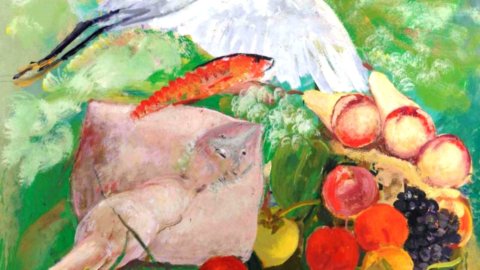Decorated with the Medal of the President of the Republic, with the patronage of the Senate of the Republic, the MIUR - Ministry of Education and Research, the MIBACT - Ministry of Cultural Heritage and Activities and Tourism and the Tuscany Region, the exhibition will take starts on 16 October 2016 and will be held in the Casino dei Principi of Villa Torlonia, in Rome, until 29 January 2017.
The exhibition "Arturo Dazzi 1881 - 1966, Rome - Carrara - Forte dei Marmi", curated by Anna Vittoria Laghi, tells the story of the artist through the privileged ties he establishes and cultivates throughout his life with three Italian cities: Carrara, the city native and training, Rome to which the artist will owe popularity and success and Forte dei Marmi, the retreat where the leading exponent of the new sculptural classicism of the 900s will work on some of his most important monumental works and where, finally, he will discover himself as a painter ("The Versilia that made me a painter", wrote Dazzi in the self-presentation of the Roman Quadrennial of 1935).
Among the three cities, therefore, it will be precisely the Capital to host the exhibition with which the Villa Bertelli Foundation wishes to bring to national attention a collection of works now kept in Tuscany and part of Dazzi's most intimate and private production.
The Casino dei Principi of Villa Torlonia will open its doors to around 60 works by the artist, including sculptures, plaster casts, paintings and drawings: some from Carrara from the collections of the Academy of Fine Arts and from that of the Cassa di Risparmio Foundation, others from loan from the Dazzi heirs. The main nucleus of the exhibition, on the other hand, is owned by the Municipality of Forte dei Marmi, to which the works were donated in 1987 by the widow Dazzi.
In Rome there are many works by Dazzi that are already kept in public and private collections or can be admired throughout the city: from the bronze group of I Costruttori of 1907 to the statue of Cardinal De Luca at the Palazzaccio, arriving at the Stele a Marconi, the large obelisk of the Eur, passing first however through a series of works executed between 1922 and 1930, including Antonella, Sogno di Bimba and Cavallino, on display at the GNAM and the GAM.
Until 29 January 2017, among the works exhibited in the Villa Torlonia Museums, directly from the Dazzi Donation of Forte dei Marmi, it will be possible to admire the plaster of the Adolescent, a sculpture exhibited at the 1938 exhibition on Italian art in Bern, which portrays a full-length nude girl: a Venus Pudica interpreted with the most sincere and genuine humanity in a tender and sensual modeling which today becomes the symbolic image of the exhibition. This plaster is accompanied by the original model of the Cavallino, the famous sculpture that Dazzi exhibited at the Venice Biennale in 1928 in the room dedicated to him and which represents in an exemplary manner the great ability to portray "the beauties of nature" with surprising anatomical perfection . Furthermore, the Roman public will be able to enjoy part of those models and those preparatory drawings of the Stele for the first time, the last and grandiose work that Dazzi will create by choosing, despite his age, to reinvent himself with a new language, rough, modern and essential .
The exhibition, "unique of its kind", as the curator underlines, traces the stages of the artist's life through works and documents that leave their homes for the first time. Arranged and organized according to a chronological itinerary, the plaster sculptures, models and sketches, letters, articles, paintings and drawings reveal the 'behind the scenes' of Dazzi's universe with an unprecedented look.
The exhibition "Arturo Dazzi 1881 - 1966, Rome - Carrara - Forte dei Marmi", which will be part of the annual program of educational activities of the Capitoline Superintendence, is accompanied by a catalogue, published by Franche Tirature, with the critical text by Anna Vittoria Laghi and the contributions by Claudio Casini and Brigida Mascitti.





